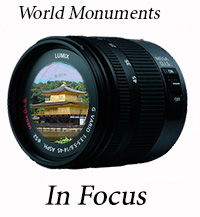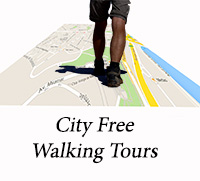Industrial Bilbao, the largest city and beating heart of the autonomous community of Pais Vasco (the Basque Country), is home to around 350,000 people and is the 10th largest city in Spain. Rising to prominence in the 14th century as a port town, the city was an manufacturing powerhouse. It has a history of production, the effects of which are still evident in the city today, although the process of de-industrialisation has gathered pace in the 20th century, leaving a much greener and more pleasant place in which to live.
We arrived in Bilbao after hitch-hiking from Mundaka, the relatively short distance of 37km. The first impression of the city, as we waited by Metro San Mames, had been formed. It was big, bigger than I had expected, and also greener. I had always previously imagined Bilbao to be grey, polluted and dirty, but it wasn’t so. There was, however, a lot of traffic, a situation that, residents confirmed, was the norm here.
Occupying the space between the Pyrenees and the Cantabrian mountains, Bilbao is wet with a mild climate. It is often unfavourably compared to San Sebastian, lacking the sea and architectural splendour of its Basque cousin and although there is a limit to the monuments the town contains, that is not to say the city doesn’t have something. The diverse mix of modernist, neoclassical, fin-de-siecle and gothic architectural styles is an intriguing combination. The city is awash with numerous examples of public street art and statues and there are frequently people on the streets, enjoying the pubs, cafes and restaurants that the city has to offer. We found the city to be more welcoming, curious and affordable than the more prestigious San Sebastian.
It is in the centre where the sights, sounds and smells of Bilbao are cooked. The pedestrianised Las Siete Callas (the seven streets), which form the basis of the old town, are where most of the city’s oldest buildings can be found.
Donejakue Katedrala (St. James’ Cathedral) dates back to 1300 when Bilbao was still just a fishermen’s enclave. Nearby Begoñako basilika (Begona’s Basilica) is dedicated to the Patron of Biscay and is a fine example of gothic and baroque architecture. The old town is also packed with bars, restaurants and pretty squares, and simply walking around this unique area is the best way to explore.
The major tourist attraction in the city is the Frank Gehry designed Museo Guggenheim (adults – €13, children – free) Opened in 1997, the building, a riot of canopies, towers and fins all held together in ship shaped form, has come to symbolise the rebirth of the city and has proved a huge hit with locals and tourists alike. Built on the site of an industrial wasteland, a 30 minute walk from the old town, this modern art gallery contains a cathedral-like interior, over 45m high allowing light to flood over the space. The museum is supplemented with a selection of weird and interesting sculptures and is framed by the imposing Puente de La Salve (La Salve Bridge). No trip to Bilbao would be complete without at least a walk around the magnificent construction.
La Alhóndiga is also worth a visit for fans of new and interesting architecture. The crowning glory being the foyer underneath a glass bottomed swimming pool.
Some great panoramic views of the city can also be obtained by taking the Funicular de Artxanda (€0.96 one way), to near the summit of Artxanda mountain. The entrance is within walking distance of the Guggenheim, just north of the Zubizuri bridge.
Transport Links
Bilbao airport is 12km north of the city and offers international flights to Paris, London, Frankfurt and a host of other places.
The city’s metro, inaugurated in 1995, has two lines (a third is under construction), which connect both banks of the metropolis area. A map can be found by following the link here.
Bilbao’s seven train lines are spread over three different services, RENFE, FEVE and Euskotren. Visit their websites for more details.
There are regular bus services which run to Barcelona, Madrid, Pamplona and San Sebastian.
Bilbao lies on the coastal A-8 motorway connecting it with Santander to the west. To the east the E-70 provides a road border to France. The southerly E-804 runs to Logrono and beyond.
Hitching Out
West (Santander)
Bilbao is not an easy place to hitchhike out of. Your best bet is to take the metro to Santurzi and get onto the BI-544 which connects to the A-8 and try there. We were lucky that our host’s father drove us to a service station about 15km along the A-8. If you can find somebody to take you there, you’re sorted.
This article was also published by Bilbao International on 15th October and by SpainTravelTips.com on 14th December and by BILBAO / BILBO
on 26th December 2012.
Written by: Jon
















































































Looks amazing. I’ve got a friend from there and have never been, shame on me. I’d best correct that error ASAP.
Thanks a lot for your comment! Bilbao is great and if you have a chance, you should definitely check it out :)
Bilbao blew me away! Loved, loved, loved it. (Not much about Spain I don’t love.) Great post. Thanks for making me want to go again! Cheers, Denise
Thanks a lot for your kind words Denise..
Your right Bilbao has something, although I don’t quite know what it is :)
Great words and pictures. You found the essence of Bilbao. Congrats!
Thanks a lot David for your kind words.
I was born and live in Bilbao but I’m currently studying abroad. Your review makes me long to return home. Many thanks for the homesickness =)
Thanks a lot for your nice comment, Markel! We can understand your pain as Bilbao is such a lovely city! ;)
Thank you for visiting Bilbao and for the article and photos!
Regards,
Bilbao International
Thanks a lot for reposting our article. We loved your city!
Pingback: León, Spain | Hitch-Hikers' Handbook
Pingback: Oviedo, Spain [travel guide] | Hitch-Hikers' Handbook
Pingback: Insights On Bilbao Spain - A Travel Guide
Thanks a lot for linking to our site, we hope our guide is of use to you.
Pingback: 5 Things to do for free in Salamanca | Hitch-Hikers' Handbook
Pingback: 16 Things you should be aware of when backpacking and hitch-hiking in Spain | Hitch-Hikers' Handbook
Pingback: Granada: hitchhiking and transport tips | Hitch-Hikers' Handbook
Is there in-expensive, safe,. long-term lodging for US expats, by any chance?
Hello Ralph. It depends what you are looking for but we recommend the following websites:
– Loquo.com
– Idealista.com
– Habitamos.com (in Spanish)
– Fotocasa.es
– Compartepiso.com (in Spanish)
– Easypiso.com
– Buscopiso.com (in Spanish)
Good luck!